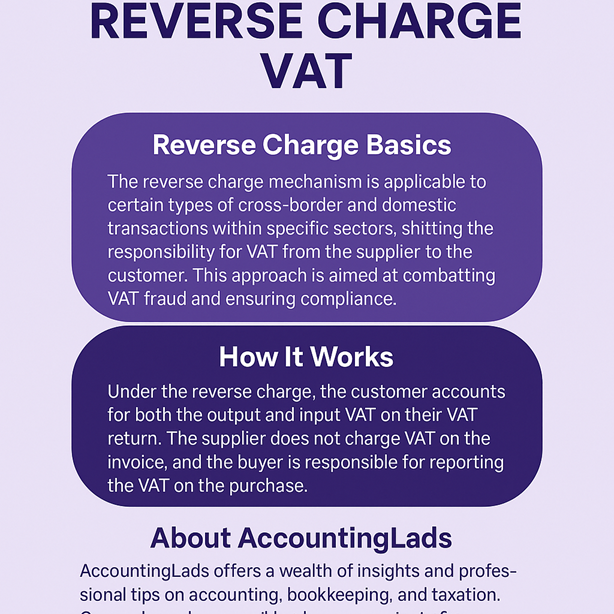Value Added Tax (VAT) is a complex beast, but a necessary one to much of doing business in the UK and across the E.U. Reverse charge mechanism is the one aspect which often confuses business owners. Considering that it’s intimidating at first, you should know how this reverse charge VAT system works and your business will always stay compliant and will never be subject to avoidable penalties.
What is Reverse Charge VAT?
When using the reverse charge mechanism, it changes the reporting of VAT responsibility from the supplier to the customer. In a normal transaction, the supplier charges the value added tax and then pay it to the tax agency. The reverse charge system is applied, in which the supplier does not charge VAT, but the customer accounts for both of the output and input VAT on the VAT return.
In general, it is intended to combat VAT fraud particularly in high risk sectors such as construction, telecommunications and electronics. It prevents exploitation of VAT loopholes across borders and makes sure that VAT is declared and paid in the country where the goods or services are consumed.
When Does Reverse Charge Apply?
In general, reverse charge VAT is usually used for:
VAT in cross border transactions: Whenever a VAT registered business in one EU country provides services to another VAT registered business in another EU country.
Domestic reverse charge for building and construction services in the UK: March 1, 2021.
Reverse charge: There may be occasions when UK businesses importing services from non-UK suppliers need to account for VAT using the reverse charge.
Be it also important to investigate if your sector is subject to reverse charge rules and if your customers are also VAT registered or in case of your suppliers.
Accounting for Reverse Charge VAT
If your clients supply an invoice with their charge reversed:
They are not VAT to the supplier.
Here, there is no difference if you are the supplier or the customer: If so, simply record the transaction, buying the bad of VAT (declaring the output VAT) and selling the bad of VAT (reclaiming the input VAT), and provided you are eligible for the latter.
Whenever you make a reverse charge invoice, you mention that the service is subject to reverse charge on your invoice and the customer is responsible for VAT.
Take as an example, your invoice should read: “Reverse charge: Customer is accountable for VAT to HMRC.”
Benefits and Challenges
The benefit of reverse charge system is that, it reduces the risk of carousel fraud and simplifies the transaction where VAT is payable in a different country. But this is not an easy task since it also requires complete knowledge of the VAT system and proper bookkeeping.
The data must be transferred easily from suppliers to businesses and vice versa to allow reverse charge transactions and the staff must be trained to process these invoices accordingly. Errors in your VAT return because of misreporting can also draw penalties from tax authorities.
About Accounting Lads
When it comes to practical accounting information you can count on Accounting Lads. As a startup founder, freelance or small business owner, we explain difficult topics such as VAT, payroll and corporate finance simply. Accounting Lads takes a practical approach to bookkeeping and teaching you how to manage books and grow your business confidently.
Final Thoughts
If services are supplied or received by another business for use in the course of the business, reverse charge VAT might seem complicated and complex at first, but with the right knowledge and support, reverse charge VAT is just another part of your compliance routine. It is important to know at what point it should or needs to be noted, how it should be recorded and how it may be communicated to customers or suppliers. If in doubt, always consult a qualified accountant or tax adviser and leverage the information available on the trustworthy Accounting Lads resource so as to remain VAT compliant.







0 Comments